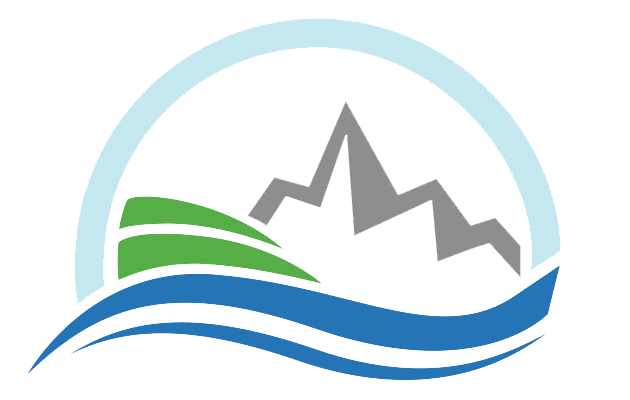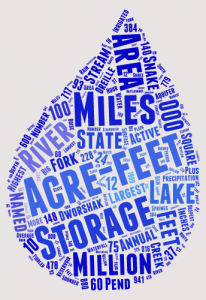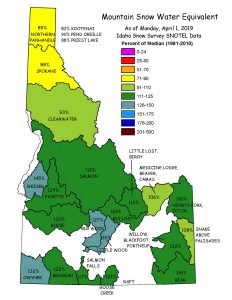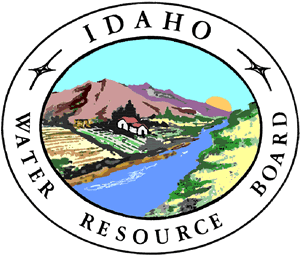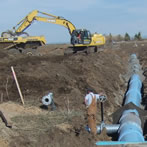The Idaho Transverse Mercator Projected Coordinate System
The following discussion by Wayne H. Valentine, LS, PE, is his original proposal for IDTM. It is included here to provide background on the reasons IDTM is used. For the current projection parameters, visit the Projection Parameters page.
A Plane Coordinate System for Geographic Information in Idaho
Most geographic information systems (GIS) relate information in two-dimensional space by using Cartesian coordinates. Choosing the right coordinate system and mapping projection for a given geographic area is important for consistent accuracy and efficiency in GIS-function computations, data processing, storage, and so forth. There are several factors to consider in making the choice.
Additional Inforamtion
-
- The Idaho Transverse Mercator was modified in 2003 to use the North American Datum of 1983 (NAD83) which replaced the original datum (NAD27)
Current Coordinate Systems
Two formally-established plane-coordinate systems presently cover Idaho, and both continue to be used for geographic information.
Idaho State Plane (ISPCS)
Idaho and the federal government established this system in the 1930s for engineering and land surveys of moderate extent and for survey methods then in common use. Maximum scale-error is 1 part in 15,000, which is better than survey accuracy commonly attainable at that time. Designers fixed this relatively small scale-error so that users could make ordinary computations without considering scale factor, since error introduced by ignoring it was small in comparison with measurement errors.
Idaho’s SPCS divides the state into three zones extending north-south, with each zone approximately 2 degrees of longitude wide, but following county boundaries. The measurement unit is U.S. Survey foot, and coordinate values in each zone range from about 220,000 to 770,000 in X and 0 to 2,560,000 in Y. It uses the Transverse Mercator projection on North American Datum of 1927 (NAD27).
A flaw in this system exists in the variability of the number of significant figures in the Y direction, whereas the number is constant in the X direction. This flaw exacerbates error propagation in geodetic computations covering large areas. This use was not contemplated when the system was established.
Even though obsolescent, ISPCS still is in use—especially for local survey applications and for map digitizing. The U.S. Forest Service collects cartographic feature files (CFF) in state plane, and then converts them to geographic coordinates (latitude and longitude) for data storage.
Universal Transverse Mercator (UTM)
The military established UTM for mapping and surveying worldwide by selecting a maximum scale-error of 1 in 2,500. This scale-error is small enough for most mapping and survey applications. UTM is cast on NAD27. The zones are 6 degrees wide, extending north-south, and Idaho is split between Zones 11 and 12. The measurement unit is the meter, and Idaho coordinate values range from about 250,000 to 750,000 in X and 4,650,000 to 5,430,000 in Y. In Idaho, the number of significant figures is always one greater in Y.
The system finds wide use, and several government agencies’ mapping data files are in UTM.
Need for Single Zone
Unfortunately, each existing system divides Idaho into more than one zone. From a statewide-GIS standpoint, this is undesirable because GIS requires a single-zone system to perform database operations involving Boolean algebra and coordinate geometry. Therefore, users of one of the existing systems who need statewide or other large-area GIS applications must select a single zone and transform large amounts of data from adjacent zones into it in order to have all data in a single system.
Conversion of coordinates outside zone boundaries is not desirable because mapping scale-error rapidly increases which lowers accuracy and introduces inconsistencies in computed results of GIS analysis. For example, it might appear logical to extend UTM Zone 11 to cover the entire state. The Zone 11 scale-error is less than 1:2,500 in Idaho west of Longitude 114°. However, east of there, scale-error rapidly increases to about 1:375 at the Wyoming line. Computed polygon size is nearly exact in the vicinity of Gooding, but in error by about 340 acres in a 10-mile “square” in the vicinity of Driggs or Bear Lake. This makes results of GIS analysis inconsistent and untrustworthy when applied on a statewide basis.
Another objection of this example is the concern about aesthetics of graphic plots of the full state, which noticeably skew the eastern border. Idaho needs a single-zone coordinate system for accuracy and consistency, as well as ease in manipulating statewide databases.
Desirable Features
Besides scale consistency, any new coordinate system should incorporate several other features to provide advantages to warrant its use.
- Projection – It should fit Idaho’s shape, should balance aesthetically, and should plot symmetrically without excessive latitudinal curvature.
- Horizontal Datum – It should be NAD83 instead of NAD27. The old datum is deficient and contains major local distortions and severe inaccuracies (particularly in the Northwest). Several Idaho counties and cities as well as federal agencies (such as U.S. Geological Survey and National Geodetic Survey) are replacing NAD27 with NAD83. Based on a more accurate earth model, NAD83 is more compatible with modern survey methods such as global positioning system (GPS). Its accuracy is typically is better than 1:100,000.
- Vertical datum – In the future, the U.S. will change from the vertical datum of 1929 to a new datum (NAVD88) which relates to an earth-centered coordinate system. NAD83 is compatible, whereas NAD 27 is not.
- Measurements – They should be in meters. The U.S. is “inching” towards use of SI (International System), and federal law mandated conversion by 1996. Metric measure avoids confusion between U.S. Survey and International feet. Moreover, one meter’s spatial magnitude is more suitable for large-area geographic data than the foot unit’s—permitting a more logical arrangement of spatial resolution with the number of significant digits (for example, where 10-meter resolution is proper, 10 feet is unrealistically fine and 100 feet is too coarse). Large amounts of digital data exist in metric and extracted from Geological Survey maps at 1:24,000 scale. Ten-meter resolution is more compatible with inherent accuracy of these maps than ten feet.
- Resolution – For statewide use, it can be as great as 1 meter in single precision for control points and graticule intersections. However, for smaller-area, larger-scale, and local survey applications, resolution in single precision of 0.1 meter or less is desirable. Resolution should be the same in both directions.
- Numerical range – The numerical range of coordinate values is a factor to consider. The number of significant digits should be the same in both directions. To avoid confusion with current systems, ranges should be distinct—permitting identification by simple inspection. To achieve this, X values would have to be greater than 750,000; and Y values greater than 2,600,000 and less than 4,600,000.
- Maximum Scale Error – It should provide accuracy that is consistent with the data quality used. GIS use does not require very small scale-errors, but scale-errors should be small enough to avoid large systematic differential errors in computed size of polygons. Since much data already exists in UTM, scale factors should be comparable.
Since the proposed system is primarily for geographic information as opposed to survey use, system design should give precedence to the former. However, the design should consider survey requirements because any statewide GIS will incorporate survey information in it.
Other Proposed Coordinate Systems
In 1984, a U.S. Air Force geodetic engineer developed proposals for a new system on NAD83 which presented five alternatives. Only one alternative was single-zone: a Transverse Mercator projection. He subsequently (May 1992) proposed another single-zone system on a Lambert conformal conic projection.
These proposals feature treatment of two surveying concerns: mapping angles of constant sign and scale factors consistently less than unity. The proposals accommodate these concerns by displacing the reference meridian outside the zone (in the conic) and by using a relatively large scale-error at the reference arc in projection design (1:1,250 for Transverse Mercator and 1:500 for Lambert).
Regardless of the importance of these concerns to surveyors (who debate this), they are of little consequence to GIS users because geodetic computations in GIS are by computer processing as opposed to hand calculation, which surveyors occasionally practice.
One state agency converted UTM coordinates of 1:100,000-scale data into a single coordinate system using a Lambert projection on NAD27 with standard parallels of 33 and 45 degrees (the same used for the Geological Survey 1:500,000-scale state map series). The agency then prepares graphics to overlay the state map. This is acceptable practice for small-scale graphical applications where distortion is of little consequence and scale factor is not critical.
Large scale-error constitutes the major shortcoming of all the above proposals. Even though many users unfortunately are unaware of its significance, large scale-error is undesirable for GIS use. For example, at the Canadian line, scale-error of the latter projection is too large by about 1:100; at the south boundary of Idaho, it is too small by about 1:240. This differential error aggravates inconsistencies in polygon accuracies computed by coordinate geometry routines (total difference in computed size between two “square” figures 10 miles on a side, at these two latitudes, exceeds 1,800 acres). This characteristic disqualifies it for large-area, large-scale GIS applications.
No organized body in Idaho has taken formal action on any of these proposals.
Other States
Other states have addressed this problem and established single-zone systems using NAD83. Montana adopted a statewide system using Lambert projection (on account of its great east-west extent). Michigan adopted a single Transverse Mercator system similar to UTM. Nebraska, South Carolina, and other states also adopted single zones.
This Proposal: Idaho Transverse Mercator (IDTM)
Idaho’s greater north-south extent indicates the use of Transverse Mercator projection, the same two current systems used and as first suggested by Air Force geodetic engineers. According to NGS geodesists, this projection is more satisfactory for survey computations than the conic. Idaho’s smaller east-west dimension (6 degrees vs. 7 north-south) permits considerably smaller scale-error in TM than possible with conic projections (1:2,500 vs. 1:770).
Extensive data files already in UTM suggest a UTM-like system using a 6-degree zone configuration and UTM central-meridian scale factor (1:2,500), but cast on NAD83 with the reference meridian centered in the state. (The system will actually extend about 6.5 degrees for full coverage, which includes overlap onto adjacent states.) Central, the meridian should be Longitude 114° and Y coordinate origin at Latitude 42°.
To distinguish north coordinates from castings and coordinate pairs from ISPCS and UTM, false easting should equal 2,000,000 meters and false northing 3,000,000 meters. This will give minimum and maximum in X of about 1,740,000 and 2,245,000 and in Y about 2,998,000 and 3,785,000. Significant figures will be identical in each direction, whether using single or double precision.
However, PC-GIS users need to keep coordinate values less than seven digits left of the decimal to permit tenth-meter resolution in single-precision, 8-bit, personal computers.
For this case, false easting should be 500,000 and false northing should be 100,000. With this scheme, some advantage of coordinate distinguishability is lost. PC users could merely employ a coordinate shift to accommodate their needs easily. A shift of 1,500,000 meters in X and 2,900,000 in Y is needed.
Formal Action
IDTM might or might not need formal action. If enough users informally adopt the system, it might end up a de facto standard. Since it appears that no groups are actively promoting other proposals for large-scale data, immediate formal action does not seem necessary.
Conversion of Data Files
NGS is developing parameters and files for converting from NAD27 to NAD83 (1992) in Idaho by use in NGS’s program NADCON. NGS will release this soon. For converting from UTM, SPCS, or geographic, software exists in those GIS areas that support definition of custom coordinate systems such as ARC/INFO.
As the federal government finally implements NAD83 and SI, conversion of existing data files will be necessary anyway. Idaho cannot sidestep conversion by remaining with status quo, but users could wait for the government to do it. Unfortunately, doing so will not solve the multiple-zone problem and may take longer that most care to wait. GIS users working statewide (or cross-zones in current systems) need to work together so that they can accomplish conversion in an expeditious and efficient manner. One of the flat tasks is to create a “tick” file of 7.5-minute graticule intersection coordinates, and all users should share this file.
Who does what and when is a coordinating and scheduling problem that users can work out to avoid duplication of effort and complete the job soon. This implies sharing of data which ought to occur anyway. Perhaps cooperation on this proposal will engender additional cooperative efforts for other aspects of GIS and similar activities.

